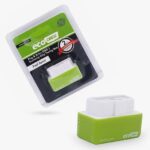For car owners keen on vehicle maintenance, tire pressure monitoring systems (TPMS) are crucial for safety and efficiency. Traditionally, dealing with TPMS issues, especially sensor replacements, often meant a trip to the tire shop and potentially high costs. However, Bluetooth Obd2 Tpms tools are changing the game, empowering DIYers to take control of their TPMS management. This article explores the benefits of using Bluetooth OBD2 TPMS tools and programmable sensors, drawing from real-world experiences to illustrate how you can save money and time while enhancing your car maintenance routine.
The Frustration with Traditional TPMS and OEM Sensors
Original Equipment Manufacturer (OEM) TPMS sensors, like Denso (Pacific), are often perceived as the gold standard. However, they come with limitations. As one car enthusiast noted, these sensors are often hard-coded and model-specific, making replacements potentially complicated and costly. Furthermore, relying solely on tire shops for sensor replacements and relearn procedures can lead to recurring expenses and a dependency that many car owners wish to avoid. The lifespan of TPMS sensor batteries is also finite, meaning replacements are inevitable, adding to the long-term cost of vehicle ownership.
Bluetooth OBD2 TPMS: A DIY Revolution
Bluetooth OBD2 TPMS tools, paired with universal programmable sensors, offer a compelling alternative. These tools connect to your car’s OBD2 port and communicate wirelessly via Bluetooth, providing a range of functionalities previously only accessible at professional shops. The key advantages include:
- Cost Savings: Universal programmable sensors are often more affordable than OEM sensors. Investing in a Bluetooth OBD2 TPMS tool eliminates the need for repeated trips to the tire shop for relearn procedures, especially when switching between summer and winter tires.
- Convenience and Control: DIYers gain complete control over TPMS diagnostics and programming. You can read sensor IDs, clone sensors, and perform relearn procedures yourself, in your own garage, at your own pace.
- Versatility: Universal sensors can be programmed to work with various vehicle makes and models. This is particularly useful if you have multiple vehicles or anticipate changing cars in the future.
- Proactive Maintenance: With a Bluetooth OBD2 TPMS tool, you can regularly check sensor status and identify potential issues before they become critical, allowing for proactive maintenance and preventing unexpected failures.
Cloning vs. Relearn: Understanding the Difference
One of the significant capabilities of Bluetooth OBD2 TPMS tools is sensor cloning. Cloning involves copying the ID of an existing sensor to a new sensor. This is particularly advantageous because it often eliminates the need for a TPMS relearn procedure. The car’s ECU recognizes the cloned sensor as the original, avoiding any warning lights or system errors.
Alternatively, a relearn procedure is necessary when new sensors with different IDs are installed. While Bluetooth OBD2 TPMS tools can also perform relearn procedures, cloning offers a simpler, more seamless solution in many cases, especially when replacing sensors on a wheel set that is frequently swapped (like winter tires).
Universal Sensors: A Practical and Economical Choice
Universal programmable sensors, such as Autel MX-sensors, are designed to be blank and reprogrammable. This means they can be configured to replace a wide range of OEM sensors. The user experience shared earlier highlights the practicality of universal sensors. By purchasing a kit with universal sensors and a Bluetooth OBD2 TPMS tool, car owners can equip multiple sets of wheels (summer and winter) with TPMS sensors without incurring exorbitant costs or requiring professional intervention each time.
Recommended Tool: Autel TS-508WF and Similar Options
The Autel TS-508WF, as mentioned in the original post, is a well-regarded Bluetooth OBD2 TPMS tool. It provides a user-friendly interface for reading sensor IDs, cloning, programming universal sensors, and performing relearn procedures. Similar tools from brands like Launch and Thinkcar are also available, offering comparable functionalities. When choosing a Bluetooth OBD2 TPMS tool, consider factors like ease of use, vehicle compatibility, and the range of functions offered.
DIY TPMS Management: Empowering Car Owners
Embracing Bluetooth OBD2 TPMS tools and universal sensors empowers car owners to move away from reactive TPMS maintenance to a proactive, DIY approach. The benefits extend beyond cost savings:
- Reduced Dependency on Tire Shops: Perform sensor replacements, programming, and relearn procedures at home, on your schedule, without needing to book appointments or wait in line.
- Peace of Mind: Regularly check sensor health and tire pressure with ease, ensuring optimal tire performance and safety.
- Enhanced Vehicle Knowledge: Engaging with your car’s TPMS system firsthand deepens your understanding of vehicle technology and maintenance.
Conclusion: Take Charge of Your TPMS
Bluetooth OBD2 TPMS tools are a valuable investment for car owners who prefer DIY car maintenance and seek to reduce vehicle running costs. By offering control, convenience, and cost savings, these tools, when used with universal programmable sensors, present a compelling alternative to traditional TPMS management methods. Embrace the DIY approach and take charge of your TPMS, ensuring safer and more efficient driving while saving money and time in the long run.
